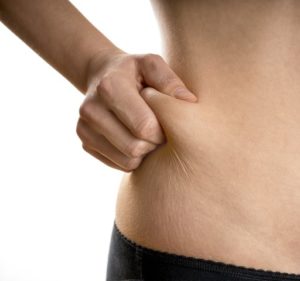What Liposuction Can and Can Not Do
Liposuction has been among the most popular plastic surgeries in the country for decades, and this isn’t surprising considering how many of us look in the mirror every day and think, “If only I could get rid of this little bulge here…” But before any cosmetic surgery, it’s important to have accurate expectations for your results so that you can be sure you’re actually receiving the right procedure for your needs. There are many misconceptions about what liposuction will or will not do, so here is a handy guide that may be able to help:
- …remove fat that is resistant to diet and exercise.
As simple as it seems that burning more calories than you need will make your body use the fat it’s stored, the fact is that we can’t choose whether that fat comes from our abdomen, our back, our legs, or other areas, and some areas just tend to hang onto fat more than others do. Instead of relying on your body chemistry, liposuction manually removes and breaks down fat cells directly—especially the stubborn fat cells that are difficult to lose naturally.
- …produce specific, fairly predictable, and sculpted results.
In addition to removing fat that is stubborn, liposuction allows you to essentially sculpt your curves the way you want them. So if you want to maintain the volume of your abdomen, buttocks, and thighs but slim your hips down, liposuction offers the control that is necessary to do so. Of course, this must all be within reason—liposuction cannot change your genetics.
- …remove fat from nearly any area.
When you think of liposuction, you probably think of the midsection, because that’s a particularly common “problem area” patients want to treat. However, liposuction is versatile enough to be used nearly anywhere, including particularly small pockets of fat like the “double chin,” the upper arms, and even the area above the knees.
- …provide fat for you to use in other areas of the body.
Fat transfer is a process which involves removing unwanted fat with liposuction, purifying it, and then injecting it into an area where a patient wants to add volume, such as the face, breasts, or buttocks. Depending on your specific goals, this may be a way to address two cosmetic concerns at the same time.
- …put the finishing touches on weight loss.
Even losing moderately small amounts of weight can be a long and difficult task, and when patients reach their goal weight, they want to be able to enjoy their ideal figure. In cases where patients have reached their weight loss goal but still have a troublesome bulge or two of excess fat, liposuction can provide the contouring to help them truly enjoy the fruits of their labor.
Liposuction Can Not…
- …serve as a substitute for weight loss.
The goal of liposuction is to remove small amounts of fat in order to create more desirable contours—not to decrease the number on the scale or provide the health benefits that come from having a lower body mass index. If this is your goal, it’s generally advised to reach or get very near your goal weight before liposuction. The more stable you can keep your weight after surgery, the longer you will be able to enjoy your results.
- …prevent weight gain.
The number of fat cells in your body actually stays rather stable throughout your life—weight gain and weight loss primarily happens when existing fat cells get larger or smaller. Liposuction actually removes a number of fat cells, which are not expected to return. However, if you do take in more calories than you burn in the future, your remaining fat cells (both in the liposuctioned area and in other areas) can still grow larger, causing you to gain weight.
- …remove sagging skin, cellulite, or stretch marks.
Liposuction treats the fat underneath the skin—it does not affect the skin itself. If you want your skin to be firmer, this can be achieved through procedures like tummy tucks, arm lifts, thigh lifts, or similar surgeries.
- …bring you from a size 20 to a size 2.
Liposuction can only safely remove small amounts of fat at one time—enough fat to produce noticeable and highly successful results, but not enough to simulate a weight loss of 30, 40, or 50 pounds or more. If you want to slim down overall, the best course of action is to lose the weight you want to lose first, then simply use liposuction or other cosmetic surgeries to put the finishing touches on your results.
When my patients come in to discuss liposuction (or any plastic surgery, for that matter), my main focus is to listen to the patient’s specific cosmetic concerns and then, based on over thirty years of experience, recommend the procedure or set of procedures which will best achieve their goals. In truth, the only way to know if liposuction is right for you is through a plastic surgery consultation. Call my Alpharetta or Atlanta plastic surgery offices to schedule your appointment. Or, for more plastic surgery tips and the latest health news, follow me, Dr. L. Franklyn Elliott on Twitter, Facebook, and Google+.

